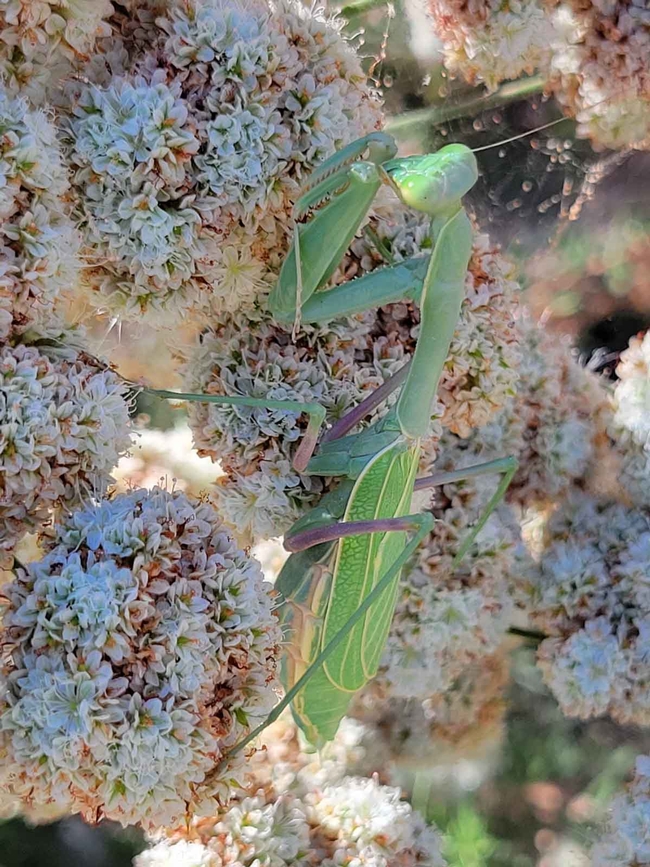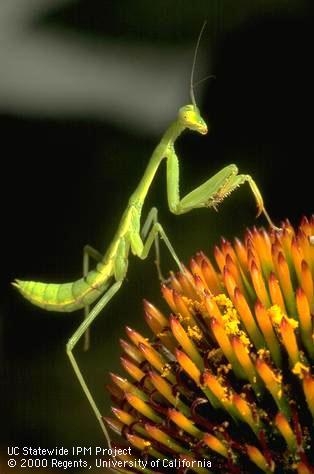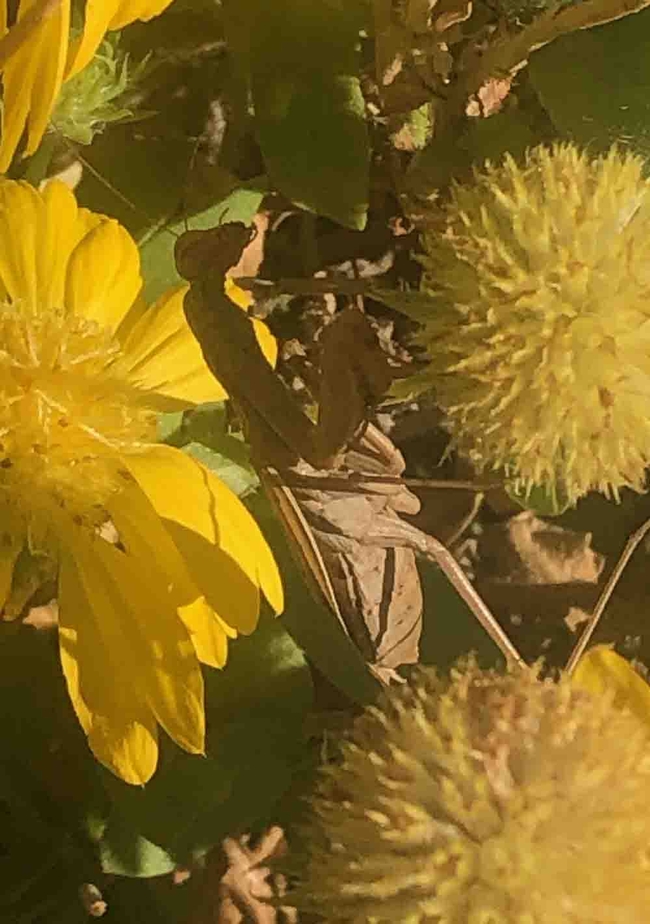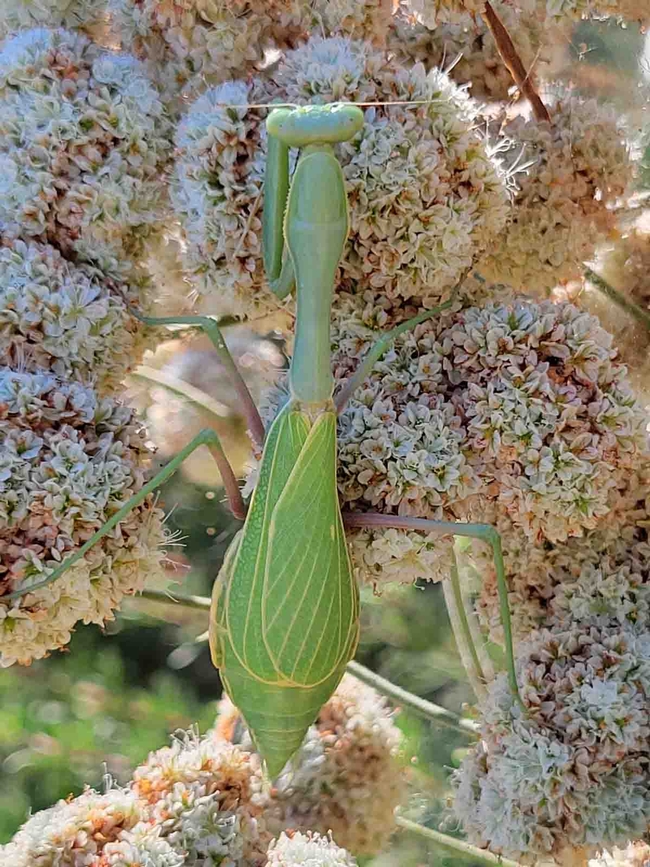At this time of year, some nurseries start selling the egg cases of Chinese mantis as a biological control for the garden. These alien-looking insects are Praying Mantis and are harmless to humans, but have an insatiable appetite for aphids, caterpillars and other insects. They are masters of disguise, hiding amongst vegetation for camouflage and to stalk their prey. They will often attack and eat things larger than themselves: lizards, frogs, and even birds. They are not considered a beneficial bug because they not only eat bad bugs but also good bugs, so they are of little value in biological control.

The mantis (or mantid) is part of the mantidae family. There are about 2,000 species of mantises worldwide, most of which live in warmer, subtropical climates. But the United States is home to at least three mantis species: the Chinese mantis, which was introduced in the late 1800's or early 1900's; the European mantis, which is pale green and only half the size of the Chinese mantis; and the Carolina mantis, the only mantis species considered native to the U.S.
The mantis is related to the grasshopper, the cricket and the termite. It has two large bulbous compound eyes capable of seeing shapes and colors, a mouth designed to chew, and very distinct wings. Because the mantis has only one ear, located on the underside of its belly, it cannot discriminate the direction or frequency of sound, but it is able to detect ultrasound. This helps protect the mantis from being eaten by bats, which produce ultrasound.

Praying mantises mate in the autumn, and will sometimes eat their mates. The female carries her eggs for a time, then deposits them on a twig, stem, or fence with a spongy, “Styrofoam-like” substance she secretes. This substance forms a protective egg case in which the offspring develop over the winter. Praying mantises can grow to well over six inches. There are three distinct stages of growth from infancy to adulthood: egg, nymph, and adult. Once the egg hatches, the nymph appears. It resembles its mother except it is much smaller in size and wingless. These nymphs have an exoskeleton (a skeleton on the outside of the body). When the nymph becomes too large, it sheds the flexible exoskeleton and forms a new one. This process, called molting, can occur up to ten times, depending on the species of mantis. During the last molting, the mantises emerge with thin, transparent wings.

UC Master Gardeners of Butte County are part of the University of California Cooperative Extension (UCCE) system. To learn more about us and our upcoming events, and for help with gardening in our area, visit our website. If you have a gardening question or problem, email the Hotline at mgbutte@ucanr.edu or leave a phone message on our Hotline at (530) 538-7201. To speak to a Master Gardener about a gardening issue, or to drop by the MG office during Hotline hours, see the most current information on our Ask Us section of our website.
Attached Images:
